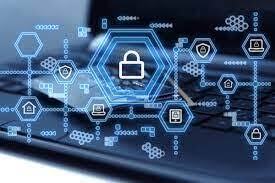In the evolving landscape of education, where technology plays a pivotal role in enhancing learning experiences and administrative efficiencies, the security and privacy of student data are paramount concerns. Educational institutions are increasingly leveraging enterprise systems to facilitate seamless communication, collaboration, and management. However, these benefits come with significant cybersecurity and data privacy challenges that require comprehensive attention.
Importance of Security in Educational Enterprise Systems
Educational enterprise systems manage a wealth of sensitive information, including student records, financial data, and administrative documents. Ensuring the security of this data is critical to safeguarding students’ privacy, maintaining institutional trust, and complying with regulatory requirements.

Common Security Threats
Cyber Attacks:
Educational institutions are frequent targets of cybercriminals aiming to exploit vulnerabilities for financial gain or disruption. Common threats include malware, phishing attacks, and ransomware.
Data Breaches:
Unauthorized access to student and faculty data can lead to identity theft, financial fraud, and reputational damage. Data breaches often result from weak passwords, inadequate network security measures, or human error.
Insider Threats:
Internal users, intentionally or inadvertently, can compromise data security. Proper access controls and monitoring are essential to mitigate insider threats.
Strategies to Enhance Security
Strong Authentication Mechanisms:
Implementing multi-factor authentication (MFA) for accessing sensitive data adds an extra layer of security beyond passwords alone.
Data Encryption:
Encrypting data both in transit and at rest protects it from unauthorized access. This guarantees that intercepted data remains unreadable without the decryption key.
Regular Security Audits:
Regular security audits and vulnerability assessments help find and fix security protocol flaws before they become exploitable.
Security Awareness Training:
Educating staff and students about cybersecurity best practices, such as recognizing phishing attempts and protecting personal information, reduces the risk of security breaches.
Incident Response Plan:
Having a well-defined incident response plan enables institutions to respond swiftly and effectively to security incidents, minimizing damage and restoring normal operations promptly.
Addressing Privacy Concerns
In addition to security, protecting the privacy of students’ personal information is crucial for maintaining trust and compliance with regulations such as the Family Educational Rights and Privacy Act (FERPA) and the General Data Protection Regulation (GDPR) where applicable.
Key Privacy Considerations
Data Collection and Consent:
Institutions should clearly communicate how student data is collected, used, and shared. Obtaining explicit consent from students or their guardians ensures transparency and compliance with privacy laws.
Data Minimization:
Collecting only necessary data and retaining it for the shortest period necessary reduces privacy risks associated with data storage and processing.
Third-Party Vendor Management:
When partnering with external service providers or using cloud-based solutions, institutions must ensure vendors adhere to stringent privacy standards and contractual obligations.
Student Rights:
Providing students and their families with rights to access, correct, and delete their personal information enhances transparency and empowers individuals to manage their data.
Enterprise Systems’ Approach to Security and Privacy
Enterprise Systems offers tailored solutions designed to meet the unique needs of educational environments while prioritizing security and privacy:
Immersive Collaboration Tools:
Secure, web-enabled platforms facilitate real-time student collaboration and instructional delivery, enhancing engagement without compromising data security.
Private LTE and BYOD Initiatives:
Providing campus-wide high-bandwidth solutions enables seamless connectivity for mobile devices while securely implementing BYOD policies.
Cloud-Based Applications:
Secure cloud-based applications broaden access to educational resources across diverse locations while maintaining robust data protection measures.
Mass Notification and Safety Management:
Deploying solutions like mass notification systems and e911 routing enhances campus safety and emergency response protocols, ensuring rapid communication during critical situations.
Conclusion
As educational institutions embrace digital transformation through advanced enterprise systems, addressing security and privacy concerns is imperative. By implementing robust security measures, adhering to privacy best practices, and fostering a culture of cybersecurity awareness, institutions can safeguard sensitive data and uphold trust among students, staff, and stakeholders. Enterprise Systems’ commitment to providing secure, innovative solutions ensures that educational institutions can harness technology effectively while protecting their most valuable asset: student data.


Recent Comments